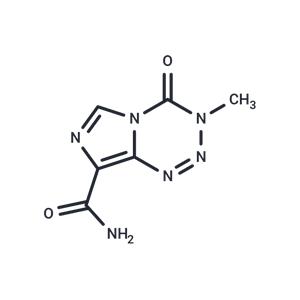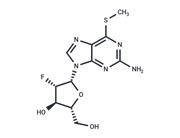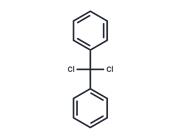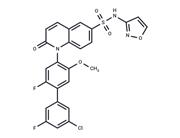| Name | Temozolomide |
| Description | Temozolomide (TMZ) is a DNA alkylating agent with blood-brain barrier permeability and oral activity. Temozolomide has antitumor activity and antiangiogenic activity, and also induces apoptosis and autophagy. Temozolomide is stable under acidic conditions and hydrolyzes under neutral or slightly alkaline conditions. |
| Cell Research | Cell lines exposed to TMZ (with or without 5-Aza or O6-BG pre-treatment) were grown in 24-well plates under standard culture conditions for 6 days. Cytotoxicity was determined using the sulphorhodamine-B (SRB) method. Briefly, the cells were fixed with 10% trichloroacetic acid for 20 min at 4°C then washed three times with water. After 24 hours, cells were stained for 30 min at room temperature with 0.4% SRB dissolved in 1% acetic acid and then washed three times with 1% acetic acid. The plates were air-dried and the dye solubilized with 300 ml/well of 10 mM Tris base (pH 10.5) for 10 min on a shaker. The optical density of each well was measured spectrophotometrically using a Titertek multiscan colorimeter at 492 nm [2]. |
| Animal Research | TZM was dissolved in dimethyl-sulfoxide (40 mg/mL), diluted in saline (5 mg/mL), and administered intraperitoneally on day 2 after tumor injection at 100 mg/kg or 200 mg/kg, doses commonly used for in vivo preclinical studies.15-17 Because cytotoxicity induced by TZM and PARP inhibitors can be improved by fractionated modality of treatment,9 in selected groups a total dose of 200 mg/kg TZM was divided in 2 doses of 100 mg/kg given on days 2 and 3. NU1025 was dissolved in polyethylene glycol-400 (40% in saline) and was injected intracranially at the maximal deliverable dose (1 mg/mouse, 0.03 mL) or, in selected groups, intraperitoneally (0.3 mL) on day 2 after tumor challenge, 1 hour before TZM administration. Control mice were injected with drug vehicles [4]. |
| In vitro | METHODS: Melanoma cells SK-mel-28, MM200, IgR3, Mel-FH were treated with Temozolomide (0-500 μM) for 72 h. Cell viability was examined using MTT.
RESULTS: The p53 status and MGMT expression levels were correlated with the sensitivity of Temozolomide. MM200 and IgR3 (expressing wild-type p53 and low MGMT levels) showed comparable sensitivity to Temozolomide, with IC50 values of 23 and 22 μM, respectively, whereas SK mel-28 and Mel-FH (mutant-type p53 and high MGMT level) were resistant with IC50 values >256 and >247 μM. [1]
METHODS: Melanoma cells MM200 and IgR3 were treated with Temozolomide (100 μM) for 24-72 h. The cell cycle was examined by Flow Cytometry.
RESULTS: Temozolomide induced G2/M cell cycle arrest in MM200 and IgR3 cells. [1]
METHODS: Human glioma cells U118 were treated with Temozolomide (250-500 μM) for 3-48 h. The m5C level in DNA was measured.
RESULTS: The response of U118 cells to Temozolomide depends on the concentration and time of the reaction. The amount of m5C in DNA increased significantly within a short period of time after Temozolomide treatment. m5C(R) reached the highest level after 24 h of treatment with 500 μM Temozolomide. [2] |
| In vivo | METHODS: To assay antitumor activity in vivo, Temozolomide (68 mg/kg by gavage) and AG-014699 (1 mg/kg by intraperitoneal injection) were administered intraperitoneally to CD1 nu/nu mice harboring medulloblastomas D425Med, D283Med, or D384Med once daily for five days.
RESULTS: AG-014699 enhanced the efficacy of Temozolomide in an in vivo model of medulloblastoma. [3]
METHODS: To assay antitumor activity in vivo, Temozolomide (0.9 mg/kg orally once daily) and Aldox (16 mg/kg intravenously once weekly) were administered to Foxn1 nude mice bearing human glioblastoma U87MG once daily for five weeks.
RESULTS: Combined treatment with Temozolomide and AldoxAldo induced significant tumor volume suppression and increased survival. [4] |
| Storage | store under nitrogen,keep away from direct sunlight | Powder: -20°C for 3 years | Shipping with blue ice. |
| Solubility Information | PBS : 5 mg/mL (25.75 mM), Sonication is recommended.(The compound is unstable in PBS. Please use soon)
DMSO : 28.83 mg/mL (200 mM)
10% DMSO+90% Saline : 2.88 mg/mL (14.83 mM), Please add co-solvents sequentially, clarifying the solution as much as possible before adding the next one. Dissolve by heating and/or sonication if necessary. Working solution is recommended to be prepared and used immediately.
|
| Keywords | DNA Alkylator/Crosslinker | Inhibitor | Apoptosis | Temozolomide | inhibit | CCRG-81045 | NSC362856 | NSC-362856 | Autophagy | CCRG81045 |
| Inhibitors Related | Stavudine | Sodium 4-phenylbutyrate | L-Ascorbic acid | Hydroxychloroquine | Guanidine hydrochloride | Taurine | Tributyrin | Paeonol | Thymidine | Naringin | Salicylic acid | Gefitinib |
| Related Compound Libraries | Anti-Tumor Natural Product Library | Bioactive Compound Library | Traditional Chinese Medicine Monomer Library | EMA Approved Drug Library | Anti-Cancer Clinical Compound Library | Natural Product Library | Drug Repurposing Compound Library | Natural Product Library for HTS | Anti-Cancer Approved Drug Library | FDA-Approved Drug Library | Anti-Aging Compound Library | Anti-Cancer Active Compound Library |
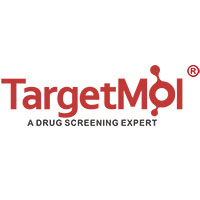
 United States
United States
